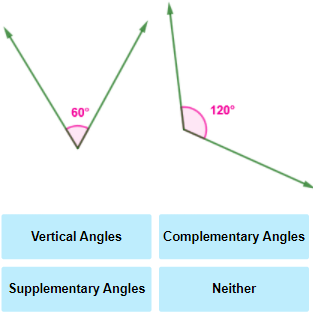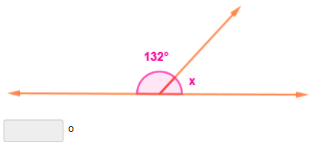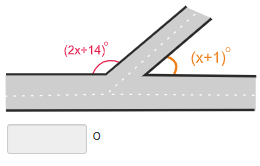
Supplementary Angles
Concept
Rules
Supplementary angles are two angles whose sum is 180 degrees. To find the missing angle, subtract the given angle from 180 degrees.
Example
Solution
The angles are supplementary. Supplementary angles are two angles whose sum is 180 degrees.
x + 107° = 180°
x + 107° – 107° = 180° – 107°
x = 73°
Practice Supplementary Angles

An angle is a figure formed by two rays, called the sides of the angle, sharing a common endpoint, called the vertex of the angle.
Vertex – is the point where two rays of an angle meet.
Adjacent Angles – Two angles are adjacent if they share a common vertex, a common side, and do not overlap.
Vertical angles are a pair of opposite angles formed by intersecting lines. Vertical angles are always congruent.
Supplementary angles are two angles whose sum is 180 degrees
Complementary angles are two angles whose sum is 90 degrees.
Congruent Angles – Two angles are said to be congruent if their corresponding sides and angles are of equal measure.
Pre-requisite Skills
Measuring Angles
Classifying Angles
Drawing Angles
Estimating Angles
Angles







